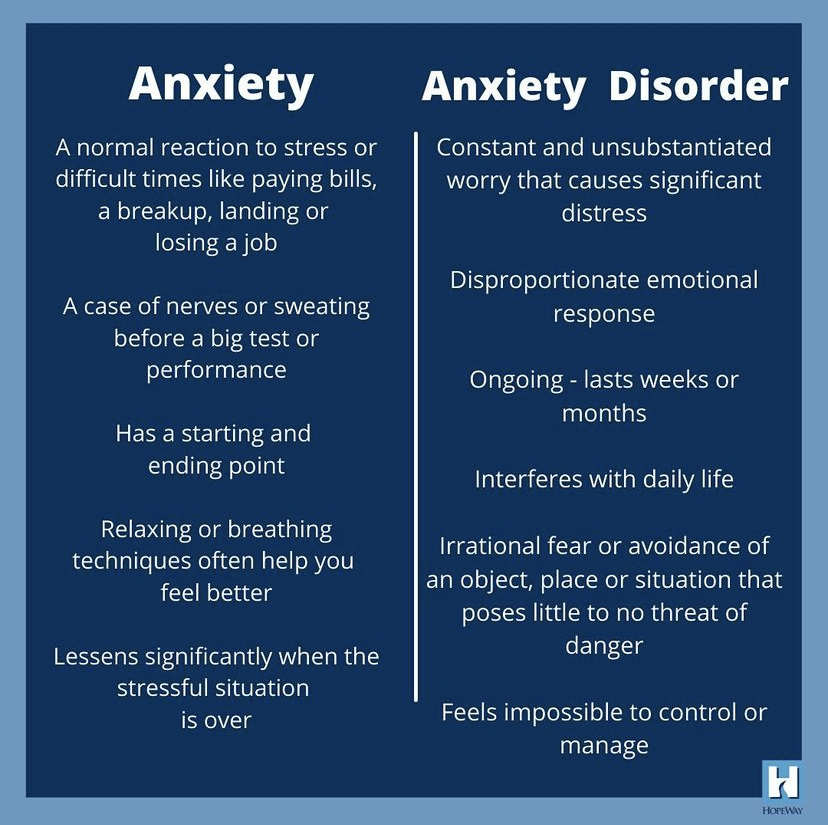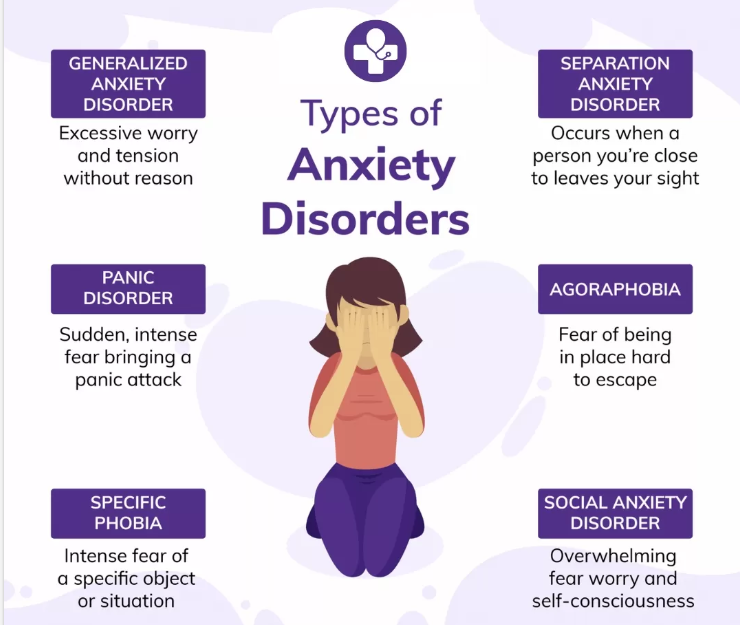Anxiety Disorders and its Treatment : The Stigma Remains
- Anxiety disorders are among the most frequently occurring mental health problems in the community today.
- They often go unrecognised in primary care settings due to lack of awareness and available human resources.
Anxiety
- Anxiety, as an emotion, is experienced by many in day-to-day life.
- In some, it can become persistent and disabling.
- Fear is an emotional response to perceived imminent threat or danger associated with urges to flee or fight.
- This ‘fight-or-flight response’ is characterised by a startled response and physiological changes.
- On the other hand, anxiety is the fearful anticipation of future danger or misfortune that is accompanied by a feeling of worry, distress, and/or bodily symptoms of tension.

Historical context
- Anxiety, as a symptom, is found across a range of neuropsychiatric disorders.
- Until the last part of the 19th century, anxiety disorders were not classified separately from other mood disorders, such as depression.
- Sigmund Freud: In 1895, he first suggested that people with mainly anxiety symptoms should be differentiated from depression. He gave the name “anxiety neurosis” to this entity.
- Freud’s original anxiety neurosis: It included people with phobias and panic attacks. He subsequently divided them into two groups – anxiety neurosis and anxiety hysteria.
- The first group included people with mainly psychological symptoms of anxiety.
- The second group had people with phobias and physical symptoms of anxiety.
Prevalence and onset of anxiety
- India’s National Mental Health Survey (NMHS) of 2015-2016 found the prevalence of neurosis and stress-related disorders to be 3.5%.
- These disorders were twice as common in women as compared to men.
- There is evidence that the developmental period of childhood, adolescence, and early adulthood are periods of high risk for the onset of anxiety disorders.
Clinical features of anxiety
- Generalised anxiety disorder (GAD) is characterised by excessive worrying (which lasts more than six months) and is not restricted to particular circumstances — for example, only when attending a social event.
- Common features include apprehension, tension, difficulty concentrating, and autonomic symptoms such as dry mouth or abdominal discomfort.
- Panic disorder is characterised by recurrent unexpected surges of severe anxiety (also known as panic attacks), which typically peak within 10 minutes and last around 30-45 minutes.
- They are characterised by a sudden onset of palpitations, choking sensation, chest pain, dizziness, depersonalisation (patients feel that they have changed and feel divorced from their own self), derealisation (patients feel that the world has become unreal, distorted or falsified), and fear of dying or losing control.
- Social anxiety disorder is characterised by the intense, persistent fear of being scrutinised or evaluated negatively by others.
- Patients anticipate ridicule or humiliation, and avoid many social situations or endure them with great distress.
- Shyness is a core symptom of social phobia
- Separation anxiety disorder is characterised by fear or anxiety concerning separation from those to whom an individual is attached.
- Common features include excessive distress when experiencing or anticipating separation from home, and persistent excessive worries about potential harms to attachment figures or untoward events that might result in separation.
- Specific (simple) phobia is characterised by the fear of particular objects, animals or situations. Common specific phobias include fears of animals, blood, injection, flying, heights, lifts, enclosed spaces, dental treatment, and choking.
Causes of Anxiety
- There are different types of Anxiety and the causes are related to the type of stress.
- The causes of Anxiety are complicated and the actual cause of this mental disorder is still unaware.
- As per the medical community, there are several factors that may contribute to the development of anxiety. Causes and risk factors may include:
- Genetic traits
- Substance abuse
- Traumatic life experiences
- Common Drug Side Effects
- Environmental factors or stressors
- Ongoing stress related to work, finances, home, etc.
- Medical conditions, and other mental health disorders
Symptoms of Anxiety
- Anxiety is related to a person’s feeling and experience. Hence, the symptoms of Anxiety, vary with the person’s feeling. There are over 100 signs and symptoms of anxiety, The most common symptoms include:
- Nausea
- Fatigue
- Sweating
- Dizziness
- Headaches
- Being irritable
- Stomach upset
- Inability to rest
- Rapid breathing
- Rapid heartbeat
- Nervous stomach
- Pulsing in the ear
- Shortness of breath
- Electric shock feeling
- Trouble in concentrating
- Shooting pains in the face.
Worrisome Anxiety disorders

- Generalised Anxiety Disorder (GAD): It is the most common type of anxiety and can be described as an extreme, intense, and illogical worry that is brought on by regular life. You will experience exhaustion, nausea, headaches, restlessness, insomnia, and sweating in addition to the anticipation of disaster regarding everyday occurrences.
- Panic Disorder: If you experience panic attacks on a regular basis, it is possible that you have a condition known as panic disorder. Some of the physical symptoms of an anxiety attack are a racing heartbeat, profuse sweating, dizziness, chest pains, and hyperventilation.
- Social Phobia: It’s important not to confuse this trait with shyness. It’s possible that you have social phobia, which is a severe anxiety disorder characterized by an intense dread of being in a social setting and being evaluated by other people. You may be suffering from social phobia if you avoid social situations because you are anxious about being around other people.
- Post-Traumatic Stress Disorder (PTSD): It’s possible that you’re suffering from post-traumatic stress disorder (PTSD) if you’ve had a traumatic experience in the past and keep thinking about it. The physical effects, which can last for years and include severe insomnia and constant fatigue, can be quite debilitating.
- Obsessive Compulsive Disorder (OCD): You may be suffering from obsessive-compulsive disorder (OCD) if you have the tendency to engage in certain behaviors or thoughts on a reoccurring basis but are unable to control them. A mild form of obsessive compulsive disorder (OCD) could consist of eating only from a specific plate, while severe OCD would involve not eating at all in the event that plate was not available.
Treating anxiety
- The need for treatment is determined by ascertaining the severity and persistence of symptoms, their impact on everyday life, the co-occurrence of depressive symptoms, and previous response to medication or psychotherapy.
- The choice of treatment is influenced by clinical characteristics, patient and doctor preferences, and the local availability of potential interventions.
- There is much overlap across anxiety disorders for evidence-based effective therapies, such as the prescription of a selective serotonin re uptake inhibitor (SSRI) or a course of cognitive behavioural therapy (CBT), but there are differences in treatment response between disorders.
Conclusion
- Anxiety disorders are among the most frequently occurring mental health problems in the community today.
- They often go unrecognised in primary care settings due to stigma, lack of awareness, and lack of locally available human resources.
- Therefore it is vital to increase public awareness of anxiety disorders and the fact that they are treatable with effective interventions.

